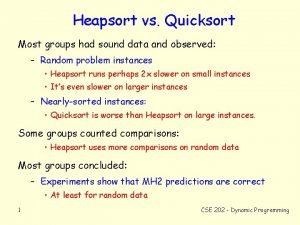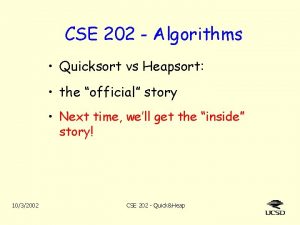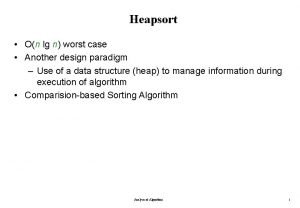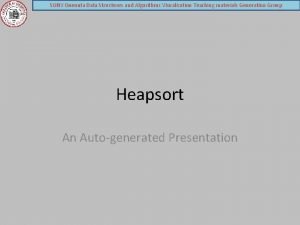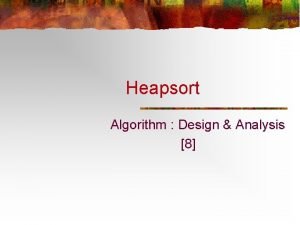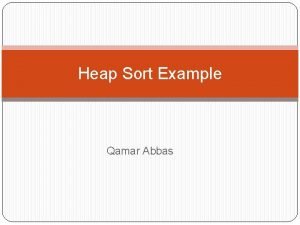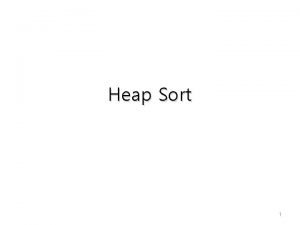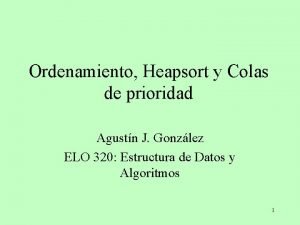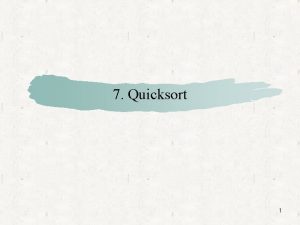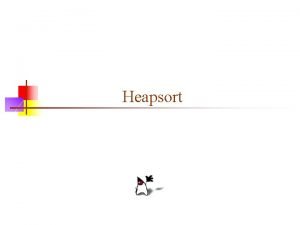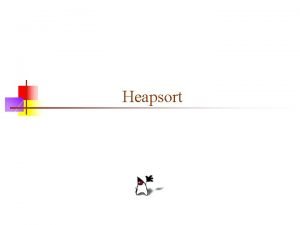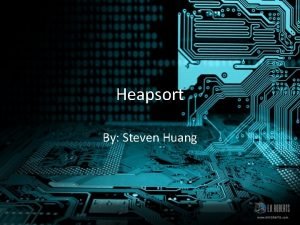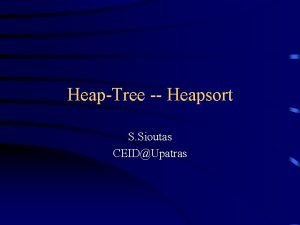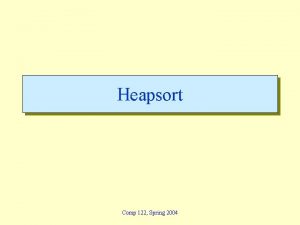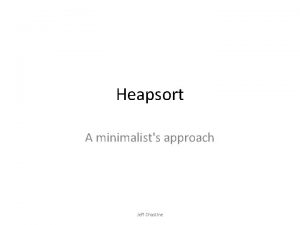Heapsort vs Quicksort Most groups had sound data









- Slides: 9

Heapsort vs. Quicksort Most groups had sound data and observed: – Random problem instances • Heapsort runs perhaps 2 x slower on small instances • It’s even slower on larger instances – Nearly-sorted instances: • Quicksort is worse than Heapsort on large instances. Some groups counted comparisons: • Heapsort uses more comparisons on random data Most groups concluded: – Experiments show that MH 2 predictions are correct • At least for random data 1 CSE 202 - Dynamic Programming

Sorting Random Data “Heap. Sort is definitely growing faster (in running time) than is Quick. Sort. . This lends support to the MH 2 model. ” Does it? What other explanations are there? 2 CSE 202 - Dynamic Programming

Sorting Random Data But wait – the number of comparisons for Heapsort is also going up faster that for Quicksort. This has nothing to do with the MH 2 analysis. How can we see if MH 2 analysis is relevant? 3 CSE 202 - Dynamic Programming

Sorting Random Data Nice data! – Why does N = 10 take so much longer per comparison? – Why does Heapsort always take longer than Quicksort? – Is Heapsort growth as predicted by MH 2 model? • Is N large enough to be interesting? ? (Machine is a Sun Ultra 10) 4 CSE 202 - Dynamic Programming

. . . and on a 1. 2 GHz Pentium III Strange data ! – Heapsort time per comparison is not increasing. – What do you think of: “Both seem to be performing at O(n lg n)” ? – What else is surprising (or suspicious)? 5 CSE 202 - Dynamic Programming

. . . and on a 1. 2 GHz Pentium III Strange data ! – Heapsort time per comparison is not increasing. – What else is surprising (or suspicious)? • Number of comparisons is sublinear for both methods • Times are sublinear – particularly last Heapsort entry • Some times are “round”, others aren’t • Times are huge – over 150 cycles/compare! 6 Experiments may be correct, but further study is certainly needed! CSE 202 - Dynamic Programming

More data. . . Fine print: For the second set of data, I made up number of comparisons ( N (lg N +2) for Quicksort, 1. 3 N (lg N + 2) for Heapsort) 7 CSE 202 - Dynamic Programming

Quicksort complexity, random inputs (times in microseconds) First two groups’ data looks a bit like n lg n. Third looks closer to linear. Fourth is sublinear. What could cause this variation? ? 8 CSE 202 - Dynamic Programming

Bonus point opportunity! You may (if you wish) submit supplemental data and analysis of your project by Tuesday’s class (firm deadline). Goal is to overcome the objections I have found with your projects, or find and explain new phenomena. I’m looking for evidence of deep thinking, not rote following of instructions. 9 CSE 202 - Dynamic Programming
